Peter de Kock is a Dutch cameraman, film producer and director. He studied at the Film academy in Amsterdam and worked as a director of photography on many films and documentaries. De Kock made his directorial debut with the film The Hands of Che Guevara , a documentary about the severed hands of the Latin American guerrilla fighter Ernesto Che Guevara that were put in a jar of formaldehyde and disappeared from public view. The film was a success at many international film festivals.

Alberto Díaz Gutiérrez, better known as Alberto Korda or simply Korda, was a Cuban photographer, remembered for his famous image Guerrillero Heroico of Argentine Marxist revolutionary Che Guevara.
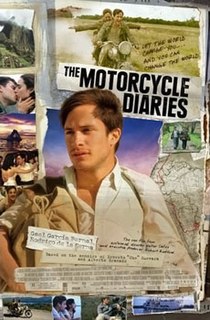
The Motorcycle Diaries is a 2004 biopic about the journey and written memoir of the 23-year-old Ernesto Guevara, who would several years later become internationally known as the notorious Marxist guerrilla leader and revolutionary leader Che Guevara. The film recounts the 1952 expedition, initially by motorcycle, across South America by Guevara and his friend Alberto Granado. As well as being a road movie, the film is a coming-of-age film; as the adventure, initially centered on youthful hedonism, unfolds, Guevara discovers himself transformed by his observations on the life of the impoverished indigenous peasantry. Through the characters they encounter on their continental trek, Guevara and Granado witness first hand the injustices that the destitute face and are exposed to people and social classes they would have never encountered otherwise. To their surprise, the road presents to them both a genuine and captivating picture of Latin American identity. As a result, the trip also plants the initial seed of cognitive dissonance and radicalization within Guevara, who would later view armed revolution as a way to challenge the continent's endemic economic inequalities and political repression.

Alberto Granado Jiménez was an Argentine–Cuban biochemist, doctor, writer, and scientist. He was also the youthful friend and traveling companion of Che Guevara during their 1952 motorcycle tour in Latin America. Granado later founded the University of Santiago de Cuba School of Medicine. He authored the memoir Traveling with Che Guevara: The Making of a Revolutionary, which served as a reference for the 2004 film The Motorcycle Diaries, in which he was played by Rodrigo de la Serna. An elderly Alberto Granado makes a short appearance at the end of the film.

Che is a two-part 2008 biographical film about Argentine Marxist revolutionary Ernesto "Che" Guevara, directed by Steven Soderbergh. Rather than follow a standard chronological order, the films offer an oblique series of interspersed moments along the overall timeline. Part One is titled The Argentine and focuses on the Cuban Revolution from the landing of Fidel Castro, Guevara, and other revolutionaries in Cuba to their successful toppling of Fulgencio Batista's dictatorship two years later. Part Two is titled Guerrilla and focuses on Guevara's attempt to bring revolution to Bolivia and his demise. Both parts are shot in a cinéma vérité style, but each has different approaches to linear narrative, camerawork and the visual look. It stars Benicio del Toro as Guevara, with an ensemble cast that includes Demián Bichir, Rodrigo Santoro, Santiago Cabrera, Franka Potente, Julia Ormond, Vladimir Cruz, Marc-André Grondin, Lou Diamond Phillips, Joaquim de Almeida, Édgar Ramírez, Yul Vazquez, Unax Ugalde, Alfredo De Quesada and Oscar Isaac.
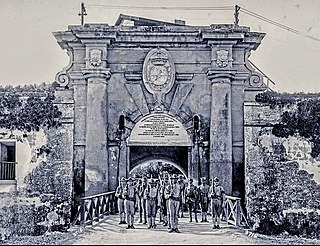
Fortaleza de San Carlos de la Cabaña, colloquially known as La Cabaña, is an 18th-century fortress complex, the third-largest in the Americas, located on the elevated eastern side of the harbor entrance in Havana, Cuba. The fort rises above the 200-foot hilltop, along with Morro Castle. The fort is part of the Old Havana World Heritage Site which was created in 1982.

Appearances of Argentine Marxist revolutionary Che Guevara (1928–1967) in popular culture are common throughout the world. Although during his lifetime he was a highly politicized and controversial figure, in death his stylized image has been transformed into a worldwide emblem for an array of causes, representing a complex mesh of sometimes conflicting narratives. Che Guevara's image is viewed as everything from an inspirational icon of revolution, to a retro and vintage logo. Most commonly he is represented by a facial caricature originally by Irish artist Jim Fitzpatrick and based on Alberto Korda's famous 1960 photograph titled Guerrillero Heroico. The evocative simulacra abbreviation of the photographic portrait allowed for easy reproduction and instant recognizability across various uses. For many around the world, Che has become a generic symbol of the underdog, the idealist, the iconoclast, or the martyr. He has become, as author Michael Casey notes in Che's Afterlife: The Legacy of an Image, "the quintessential postmodern icon signifying anything to anyone and everything to everyone."
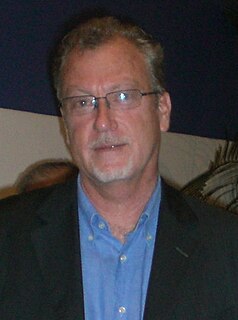
Jon Lee Anderson is an American biographer, author, investigative reporter, war correspondent, and staff writer for The New Yorker, reporting from war zones such as Afghanistan, Iraq, Uganda, Palestine, El Salvador, Ireland, Lebanon, Iran, and throughout the Middle East as well as during Hurricane Katrina rescue efforts with K38 Water Safety as documented in the New Yorker article Leaving Desire. Anderson has also written for The New York Times, Harper's, Life, and The Nation. Anderson has profiled political leaders such as Hugo Chávez, Fidel Castro, Che Guevara, and Augusto Pinochet.
The Hands of Che Guevara is a 2006 documentary film made by Dutch film director Peter de Kock. The documentary is a search for the severed hands of the Latin American guerrilla fighter Ernesto Che Guevara.

Fernando Birri was an Argentine film maker and theorist. He was considered by many to be the father of the new Latin American cinema.

Ernesto "Che" Guevara was an Argentine Marxist revolutionary, physician, author, guerrilla leader, diplomat, and military theorist. A major figure of the Cuban Revolution, his stylized visage has become a ubiquitous countercultural symbol of rebellion and global insignia in popular culture.
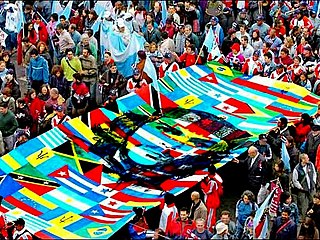
The legacy of Argentine Marxist revolutionary Che Guevara is constantly evolving in the collective imagination. As a symbol of counterculture worldwide, Guevara is one of the most recognizable and influential revolutionary figures of the twentieth century. However, during his life, and even more since his death, Che has elicited controversy and wildly divergent opinions on his personal character and actions. He has been both revered and reviled, being characterized as everything from a heroic defender of the poor, to a cold-hearted executioner.
Ernesto "Che" Guevara, was an Argentine Marxist revolutionary, politician, author, intellectual, physician, military theorist, and guerrilla leader. His life, legacy, and ideas have attracted a great deal of interest from historians, artists, film makers, musicians, and biographers. In reference to the abundance of material, Nobel Prize–winning author Gabriel García Márquez has declared that "it would take a thousand years and a million pages to write Che's biography."
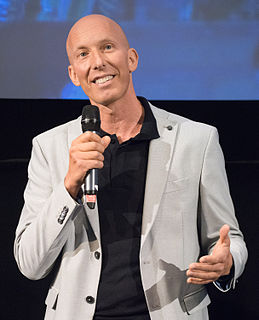
Erik Walter Gandini is an Italian-Swedish film director, writer, and producer and professor of documentary film at Stockholm University of the Arts.
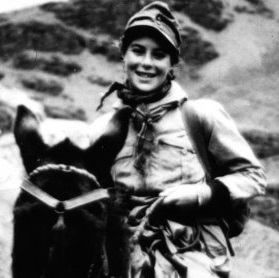
Monika Ertl (1937-1973) was a German-Bolivian communist militant, guerrilla fighter and the daughter of Nazi propagandist Hans Ertl. She is most known for assassinating Colonel Roberto Pereira, the man responsible for chopping off Che Guevara's hands. This successful assassination earned her the title 'Che Guevara's avenger' in Germany. She continued to serve as a soldier in the National Liberation Army (ELN) resisting the Bolivian government until she was captured, tortured and executed in 1973.

Che Rise and Fall is a documentary film created by Eduardo Montes-Bradley. The film was entirely shot in Cuba at the time Che Guevara’s remains were airlifted from Bolivia to Santa Clara the final resting place. The documentary features the testimonies of Guevara’s comrades-in-arms in Sierra Maestra, Congo and Bolivia, also with Alberto Granado with whom Guevara rode a motorcycle from Argentina on a trip that will end 16 years later in the jungles of Bolivia, an experience that was brought to the big screen on The Motorcycle Diaries. Che Rise and Fall begins with an account of Guevara's death in Bolivia in 1967, and fittingly ends with footage of the return of his remains for interment in a monument in Santa Clara's Revolution Square some 30 years later.

Guerrillero Heroico is an iconic photograph of Marxist revolutionary Che Guevara taken by Alberto Korda. It was captured on March 5, 1960, in Havana, Cuba, at a memorial service for victims of the La Coubre explosion. By the end of the 1960s, the image, in conjunction with Guevara's subsequent actions and eventual execution, helped solidify the leader as a cultural icon. Korda has said that at the moment he shot the picture, he was drawn to Guevara's facial expression, which showed "absolute implacability" as well as anger and pain. Years later, Korda would say that the photograph showed Che's firm and stoic character. Guevara was 31 years old at the time the photograph was taken.

The Ñancahuazú Guerrilla or Ejército de Liberación Nacional de Bolivia was a group of mainly Bolivian and Cuban guerrillas led by the guerrilla leader Che Guevara which was active in the Cordillera Province of Bolivia from 1966 to 1967. The group established its base camp on a farm across the Ñancahuazú river, a seasonal tributary of the Rio Grande, 250 kilometers southwest of the city of Santa Cruz de la Sierra. The guerrillas intended to work as a foco, a point of armed resistance to be used as a first step to overthrow the Bolivian government and create a socialist state. The guerrillas defeated several Bolivian patrols before they were beaten and Guevara was captured and executed. Only five guerrillas managed to survive, including Harry Villegas, and fled to Chile.

Gianni Minà is an Italian journalist, writer, magazine editor and television host. He has collaborated with both Italian and International newspapers and magazines; produced hundreds of reports for RAI ; conceived and hosted television programs, as well as produced successful documentary films on the lives of Che Guevara, Muhammad Ali, Fidel Castro, Rigoberta Menchú, Silvia Baraldini, Subcomandante Marcos and Diego Maradona.
Chevolution is a 2008 documentary film which examines the history and legacy of the photo Guerrillero Heroico taken by famous Cuban photographer Alberto Díaz Gutiérrez. This image has thrived for the decades since Che Guevara's death and has evolved into an iconic image, which represents a multitude of ideals. The documentary explores the story of how the photo came to be, its adoption of multiple interpretations and meanings, as well as the commercialization of the image of Ernesto "Che" Guevara.
Vida del Che is an Argentine biographical graphic novel written by Héctor Germán Oesterheld and illustrated by Alberto Breccia and Enrique Breccia. The Historieta narrates the life of the revolutionary Che Guevara from his childhood to his assassination in Bolivia. It was originally published as a book in Argentina in 1968, only three months after Che Guevara's death. The illustrator Enrique Breccia, son of Alberto and equally famous in the field of the illustration, participated in the final stretch of the artwork, which was also his first comic.